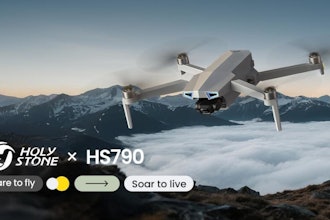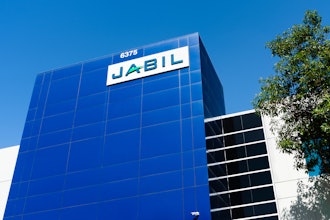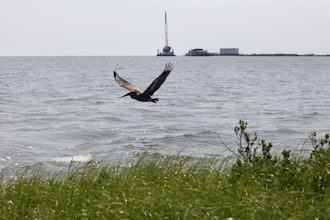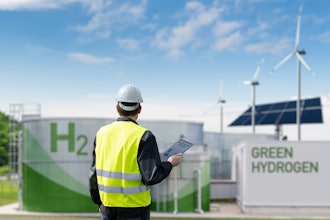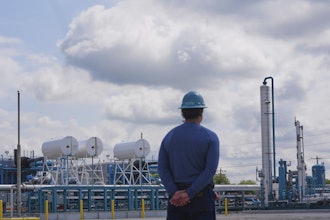PAL-V Unveils Flying Car at Motor Show
We first heard of the PAL-V flying car last April, when the Dutch company showed off a scale model of the Liberty in Monaco. The Liberty is PAL-V's new three-wheel gyroplane.
This week, attendees at the Geneva motor show had a chance to see the first two-seat production model, and it did not disappoint. Unlike the Switchblade, Liberty is no kit car. The flying car has a retractable propeller mounted on the back that is driven by two engines. A large rotor, that also retracts, is mounted on the roof to stabilize the vehicle. According to the company, the transition from car to plane takes about 10 minutes.
Capable of 105 mph on the road, 110 mph in the air, the PAL-V has a range of 310 miles in the air on a tank of regular unleaded gas — but it is going to cost you, to the tune of $615,000. The company's first production run will only include 90 vehicles.
You will still need a pilot's license and an airstrip to fly. Unlike vertical takeoff and landing aircraft currently in development, the Liberty needs 100-650 ft of airstrip to takeoff and land. The company believes that as flying cars become more mainstream, small airstrips will begin to pop up all over the globe.
PAL-V is currently going through the final stages of certifying the Liberty for the road and the air. It didn't give a timeline for when the first production model will hit the streets.
These Tools 3D Print Metal on CNCs
Based out of Los Angeles, CA, 3D-Hybrid is the company behind the world's largest metal 3D printer. Well now, the company may make metal 3D printers obsolete with new hybrid manufacturing processes. Hybrid manufacturing is a new term for processes that combines traditional additive and subtractive manufacturing techniques.
3D-Hybrid created three new patent-pending tools that allow you to 3D print metal on existing CNC machines using directed electrical, optical and kinetic energy. The line includes the Wire-Arc Additive Manufacturing tool, the Laser Metal Deposition tool, and Cold Spray tool.
The Wire-Arc Tool uses dip-transfer technology and proprietary methods for hybrid manufacturing. As the tool is used to build parts in conjunction with subtractive tools that clean it up as its being built. According to the company, the tool is 50x faster than selective laser melting and a more effective option for alloys that are reflective to laser wavelengths.
The Laser Tool enables a variety of feedstock options from wire to blending powder materials for gradient and custom alloy generation; and the Cold Spray Tool is a solution for printing alloys with high thermal conductivity.
The new tools could have a profound impact on the industry, particularly the aerospace, automotive, oil and gas and industrial sectors, but really it could be of interest to any company with a CNC machine that is contemplating the cost of 3D printers.
Hydrofoil Yacht Flies 5-Feet Above the Water
About 10 years ago, the Flyak turned heads when the kayak with hydrofoils first lifted out of the water and "flew" above the surface. Once the rider got up to 6 mph, the foils propelled the hull above the surface.
I'm surprised that it took ten years, but Enata Marine has taken the technique and applied it to a luxury yacht. The Foiler is a hybrid diesel-electric yacht with a retractable hydrofoil system that lifts the yacht five feet above the water.
According to New Atlas, the Foiler has two 320-hp BMW engines that power a pair of generators used by two electric torpedo engines that drive the boat. Which is important, because the Foiler needs to build up a little more speed before it can fly. The vessel has to reach 19 mph before the foils deploy, but once it is out of the water, it can reach up to 46 mph.
The four hydrofoils make for a smoother ride as the yacht cruises through the chop.
This is Engineering By Design.











